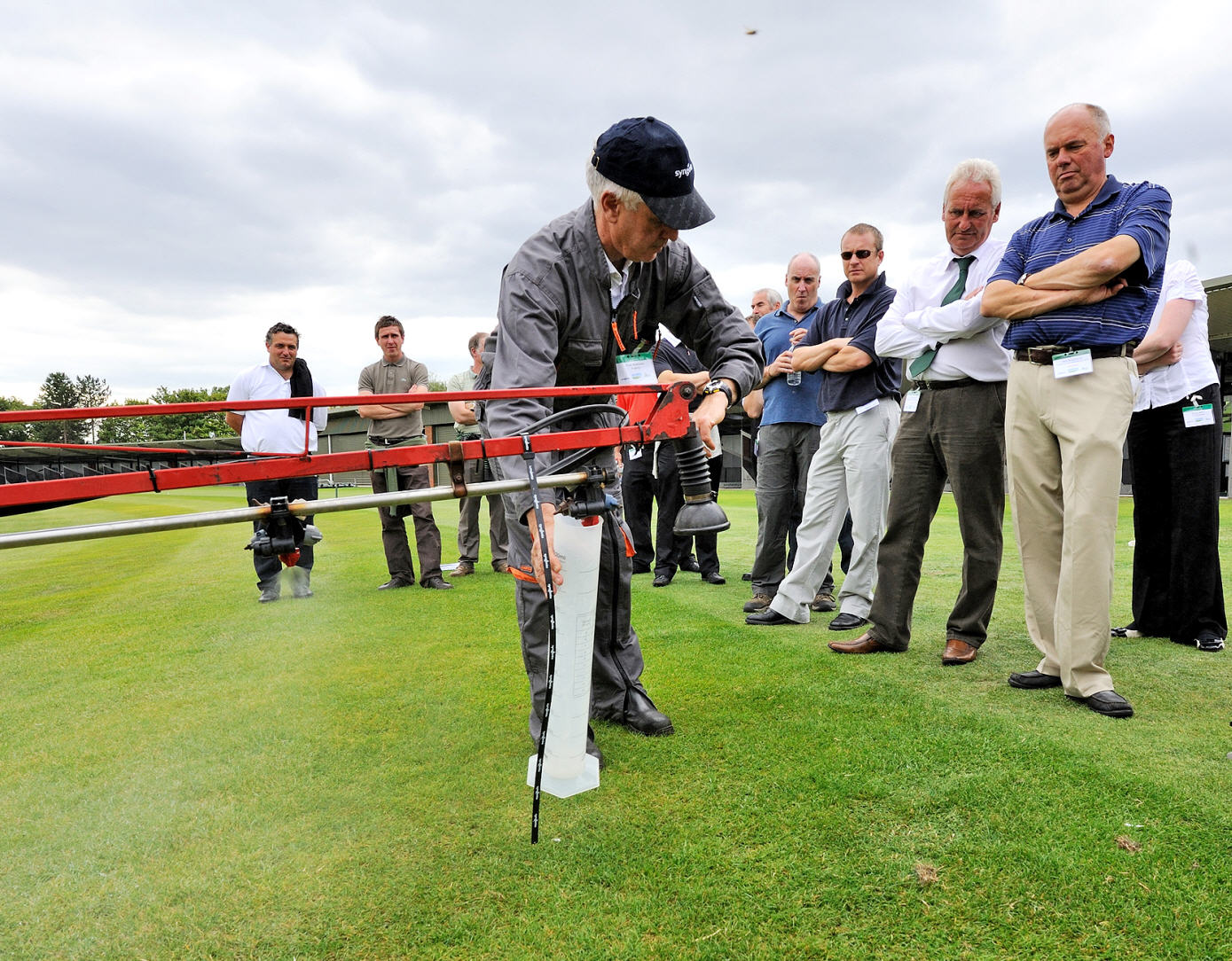 Turf sprayer operators should calibrate sprayers and check nozzle output far more regularly to ensure accurate application. Fewer than one in 10 operators check the water volume application rate before each treatment, with many only checking for nozzle wear and consistency less than once a season.
Turf sprayer operators should calibrate sprayers and check nozzle output far more regularly to ensure accurate application. Fewer than one in 10 operators check the water volume application rate before each treatment, with many only checking for nozzle wear and consistency less than once a season.
A straw poll of operators at the Syngenta and Everris Turf Science Live event last month (26 July) revealed calibration and sprayer filling were the two most disliked operations in the process. During a demonstration of the Art of Application, Syngenta Application Specialist, Tom Robinson, highlighted the company has instigated a number of initiatives to address these issues and assist operators to achieve more accurate and timely spraying operations.
“All of our new products are now being trialled at lower water volumes, which significantly reduces the number of fills required to complete the job,” he said. “It will also help operators get around the golf course or sports field more quickly, to reduce disruption and optimise spray timing.”
Reducing the water volume from typical turf application rates of 800 litres a hectare down to 200 litres, for example, could increase sprayer output by up to 80%, he explained. Furthermore, STRI Trials have also shown that results with fungicides, such as Heritage Maxx or Medallion TL, could be even better when applied at these lower water volumes.
 Additionally, he added that it is essential operators know precisely the water volume being applied, and to check the output regularly. “Once you know your spraying speed, the unique pre-calibrated Syngenta Sprayer Calibration Checker measuring cylinder means operators simply collect the output from one nozzle for the predetermined time, and it instantly shows precisely what the water volume application rate will be.” The process takes less than a minute, he demonstrated.
Additionally, he added that it is essential operators know precisely the water volume being applied, and to check the output regularly. “Once you know your spraying speed, the unique pre-calibrated Syngenta Sprayer Calibration Checker measuring cylinder means operators simply collect the output from one nozzle for the predetermined time, and it instantly shows precisely what the water volume application rate will be.” The process takes less than a minute, he demonstrated.
A simple to follow calibration process is detailed on a downloadable Technical Update from the GreenCast website, he added. The GreenCast Application Zone also provides an on-line calculator for operators to work out the required combination of speed and pressure for any required application rate.
Mr Robinson also demonstrated that the Calibration Checker should also be used to asses nozzles for wear and consistency of output across the spray boom. Operators should collect the output from each nozzle for 30 seconds, and compare the volume collected; if output from any one nozzle varies by more than 4% from the average, all the nozzles should be replaced with a complete new set, he advised. “The cost of new nozzles is relatively small, compared to the absolute importance of accurate application on turf surfaces to maintain the best possible quality and attain the best possible results from each application.”
Mr Robinson added that if operators were only spraying on limited occasions and small areas, nozzles could typically last a number of years. But if more abrasive trace elements, fertilisers or low quality formulation products are being used, wear rates could be much faster, he warned; once a nozzle starts to wear, the spray pattern and accuracy can quickly deteriorate. Solid trace elements are particular culprits.
Tom Robinson’s Top Tips for Accurate Application include:
- Measure your green size to know the target area
- Calibrate your sprayer regularly and check for nozzle wear
- Fit Syngenta Turf Foliar Nozzles
- Have sprayers tested as part of the National Sprayer Testing Scheme
- Review latest application techniques and tools on the GreenCast website
- Set nozzle height to 50 cm above the ground, using the Syngenta Nozzle Height Indicator
Syngenta turf agronomy and product information www.greencast.co.uk

